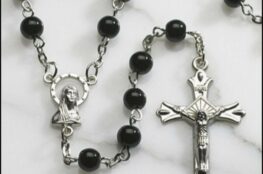Without pretending to give the topic the full treatment it is due, permit me to make the off-the-cuff observation that “aesthetic Catholicism,” a semi-intellectual posture predicated upon making the Faith a lifestyle choice, is now in full swing among certain circles of young(ish) Christians who think posting selfies which look like they were lifted from a Terrence Malick film and quoting Chesterton sets them apart. Granted, this “brand” of contemporary Catholic posturing is exponentially less noxious than the “bourgeois Catholicism” which is normative in most parts of the Western Catholic world today. If there an ideological glue binding both camps together it is papalotry, or a certain type of papalotry where the “Pope is the Faith; the Faith is the Pope.” Make any mention that Christ had 12 Apostles rather than one and all of these well-intentioned, well-meaning Catholics will start murmuring about your “crypto-Protestantism” and “lack of obedience” to the Holy Father. (And what of God the Father? He’s secondary.) What splits these two camps is how they internalize the magisterium, or a certain reading of the magisterium. The “bourgeois Catholic” believes that the Church provides a pathway to being both in the world and of it with nary a second thought. Liberalism can and will save us. The “aesthetic Catholic” thinks salvation comes from Bernie Sanders and microbreweries.
All of these nonsense abides above and beyond classic distinctions between conservative and traditional Catholics. As mind-boggling as it may be, many a “bourgeois Catholic” positively embraces the Tridentine Mass and may have even read an article or two from the Summa one time. The “aesthetic Catholic” likes the Tridentine Mass, too, because it is (superficially) counter-cultural, “beautiful,” and all that jazz. What both groups seem to be missing is an eschatological horizon, a sense that Christ came to lead all souls to Heaven not make the historical conditions ripe for alt-country music or golf courses. On a lower level, one might suspect there is a general lack of seriousness among both camps — the same lack of seriousness one finds among all liberals. (And do not get me wrong, dear reader: “aesthetic” and “bourgeois Catholics” are both thoroughly liberal in orientation.)




May 10, 2016
Aesthetic Catholicism is an old and widespread phenomenon. What reason is there to associate it particularly with the ‘damn hipsters’ trope? Besides, Bernie Sanders and microbreweries and alt-country (and being young) are actually relatively good things. If perhaps a kind of cool-Catholic posture gives people into those things a way into their Church they may in a time of desolation turn to the eschatological and sacramental rather than the sensual.
May 10, 2016
Oh I can see where all of that stuff is fine; I was being a bit tongue-in-cheek with those examples, though I don’t believe Sanders (or any American politician) is a “good thing.”
May 10, 2016
I should emphasize the “relatively” – relative to the landscape of nationally prominent American politicians, the rise of Bernie Sanders is a good thing, Not sure a Sanders presidency would be objectively a “good thing.”
May 10, 2016
When you talk about “bourgeois Catholicism” what in general do you mean by the term? I’ve seen it crop up here and there and have an idea in my head. Is it a type of middle or upper middle class white Catholicism that is concerned with having a respectable “image” á la Protestant Heaven in the Simpsons?
A similar interesting question I think is what are or are there similar trends in Orthodoxy? Is this just a way of being Christian in North America?
May 10, 2016
I think you are on to what I am talking about. It’s an easy-going, “Good American” Catholicism, the sort which really started to germinate in the middle of the last century. It’s also the same that seems incapable of comprehending our present political predicament, still yammering on with that “religious freedom” nonsense.
And yes, I would say Orthodoxy is infected by the same problems as Catholicism, despite what certain Orthodox celebrities say.
May 10, 2016
*cough* *roddreherjosiahtrenham* *cough*
May 10, 2016
Can you point to concrete examples of this phenomenon, because if it is occurring in my region, I would take it over the “Catholic Amish” loons I generally encounter in the local EF parish.
May 10, 2016
Oh I don’t want to name names, but I think you can figure out those online taking this sort of posture.
May 10, 2016
I’ll call myself out (at least for the images themselves), then I just need to find a popular and well worn Chesterton/Newman/Sheen quotation to slap on the image. https://www.instagram.com/p/5tOnHVQ8zf/
https://www.instagram.com/p/1dAxoOw85K/
A well worn quote…like this one… https://www.google.ca/search?q=catholic+chesterton&source=lnms&tbm=isch&sa=X&ved=0ahUKEwjZ6paa9c_MAhVI_IMKHflbDvAQ_AUICSgD&biw=1680&bih=939#tbm=isch&q=chesterton+catholic+quote&imgrc=fNcWHOuvIpai8M%3A
May 10, 2016
Really? In my experience of the Catholic world, the hipsters are pretty fake and the bougie types are stuffed-shirts. Both are often insufferable. On the other hand, the Catholic Amish types with 10 kids in a Ford Econoline are usually kind and genuine, if a bit mousy and generally odd. Just my experience.
May 10, 2016
What do you mean by Catholic Amish? The “Plain Catholics” or more metaphorical?
May 10, 2016
Brian M brought it up first, so I can’t answer for what he meant, exactly. That said, the people I was referring to are the folks whose women wear ankle-length skirts all the time, who likely live far away from the city, and idealize/aspire to an agrarian life “off the grid.” Plain people, but much more self-consciously so than the actual Amish. Plus they’re usually big-time trads.
May 11, 2016
That pretty much nails it. This means that they are generally entirely ignorant of popular culture, sports, literature, film, music, or anything else that I might try to chat about at a post-Mass “convivium” other than whatever they are inadequately teaching in their kids’ homeschool. I’d take a handful of aesthetes who drink craft ale and wear well-fitted clothes to balance that out, no problem.